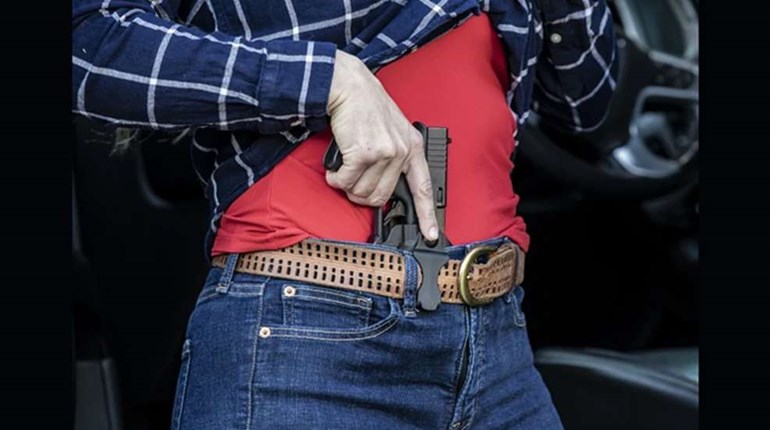
While the past few years have seen immense gains made in many states for Second Amendment freedoms, particularly with constitutional carry, there are still some state officials insisting on limiting law-abiding Americans’ Second Amendment rights.
Illinois is one such state. The recently passed H.B. 5471, a bill signed into law by Gov. J.B. Pritzker (D), is a comprehensive ban on many commonly owned firearms and magazines in the Land of Lincoln.
“Today, we made history, becoming the ninth state to institute an assault weapons ban—and one of the strongest assault-weapons bans in the nation,” Pritzker said to the local media before signing the bill.
The new law bans the future purchase or acquisition of “many semi-automatic firearms that law-abiding citizens commonly own for self-defense, competition, and recreation, as well as certain spare parts for them, bans handgun magazines that can hold more than 15 rounds of ammunition, long gun magazines that can hold more than ten rounds of ammunition, and ‘combination[s] of parts’ from which such magazines can be assembled, bans .50 BMG caliber firearms and ammunition, and expands the duration of the state's ‘red flag’ firearm restraining order by increasing it from 6 to 12 months,” as reported by the NRA Institute for Legislative Action.
As Pritzker noted, Illinois is now the ninth state to institute such a ban, regardless of its constitutionality. As the calls to ban the politically mislabeled “assault weapons” is a common talking point for gun-control types, it’s important to look at the facts and the data.
For starters, “assault weapon,” as we’ve repeatedly noted, is a politically malleable term that doesn’t have any specific meaning. For gun controllers, it will mean whatever is convenient at the time, or whatever firearms are in their gun-ban crosshairs.
Beyond that, the U.S. Supreme Court ruled in Heller (2008) that the Second Amendment protects “arms ‘in common use at the time’ for lawful purposes like self-defense.” With more than 24 million of these rifles in circulation throughout the country, according to the latest data, these semi-automatic rifles are clearly in common use.
As for the impact of such a ban, it’s important to look at the data following the federal ban that was enacted in 1994 and remained in effect for a decade. A congressionally-mandated study found that the ban had a negligible effect, if any, on crime. In spite of this, Illinois has enacted its own ban, and the Biden administration wants Congress to pass another federal ban.
Finally, as Charles C.W. Cooke wrote for America’s 1st Freedom, “most Americans do not know that rifles of all types are used in fewer murders than are hands and feet, and that the rifles that have been arbitrarily deemed ‘assault weapons’ are used in only a fraction of those crimes.”
This ban punishes the law-abiding citizens of Illinois, and doesn’t actually address the state’s crime problem, especially in Chicago, where a ban on such rifles has been in place for years.


































